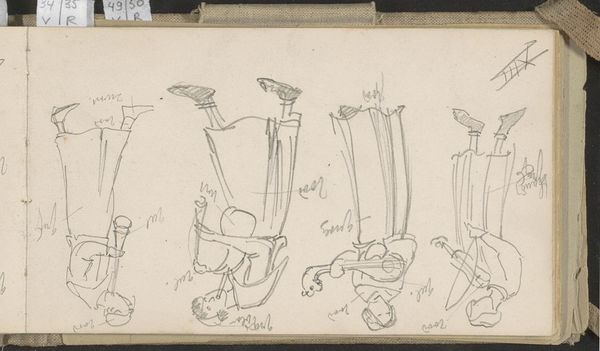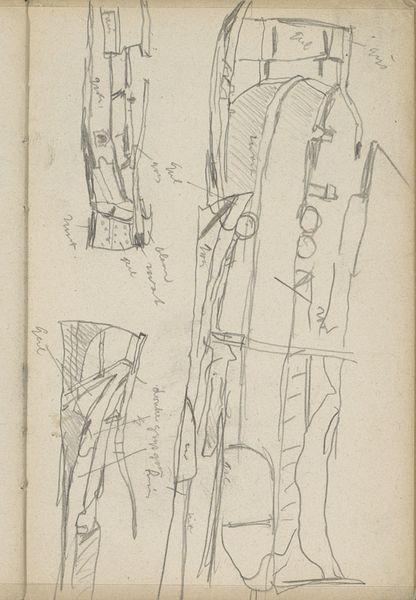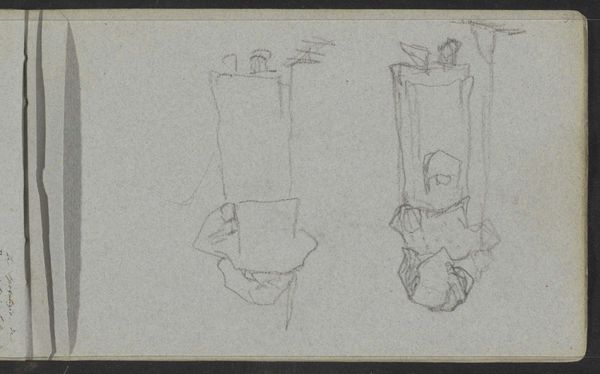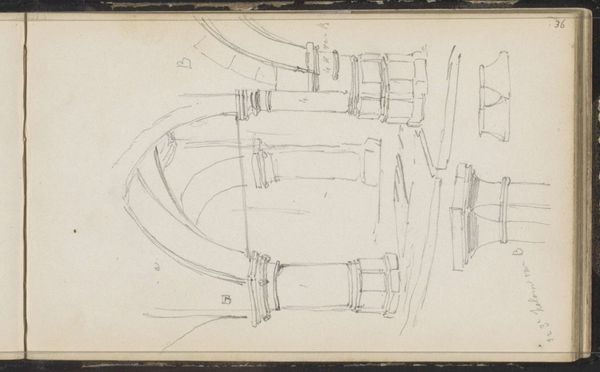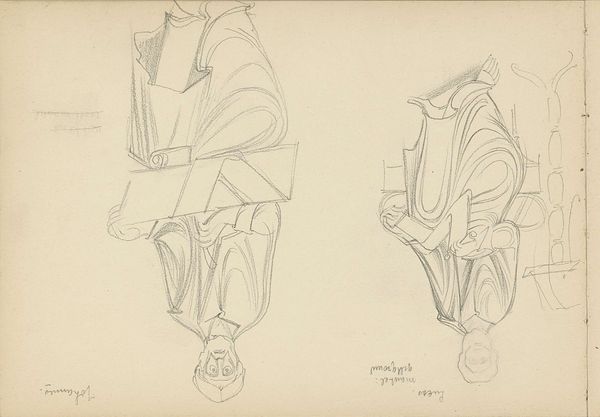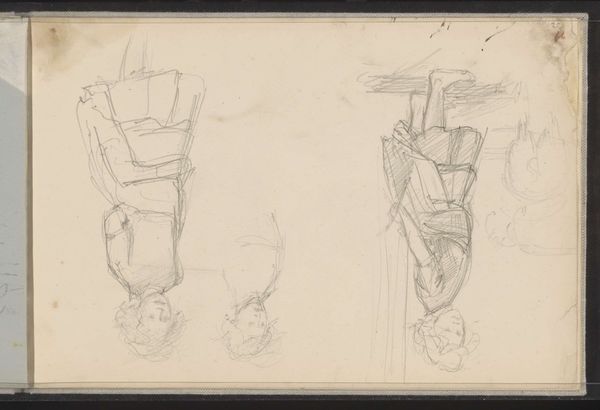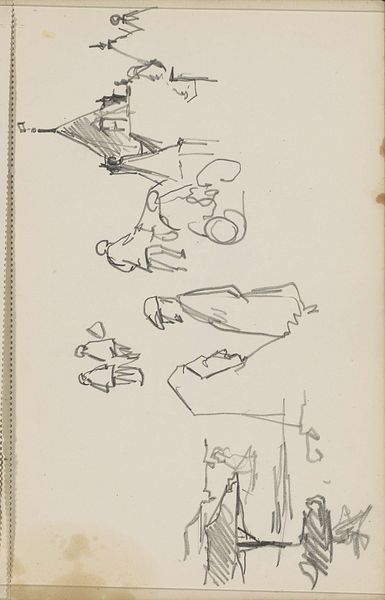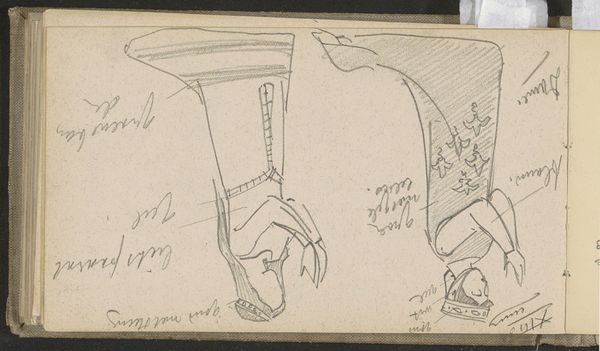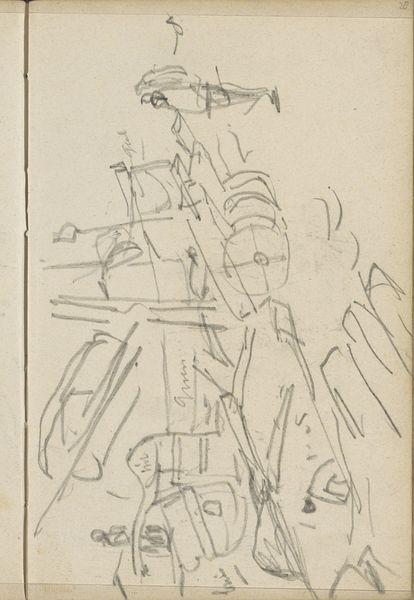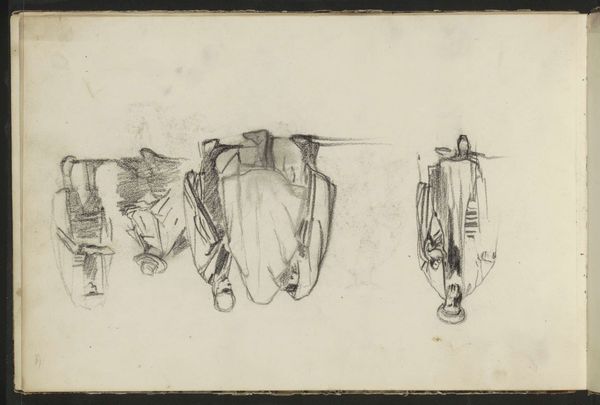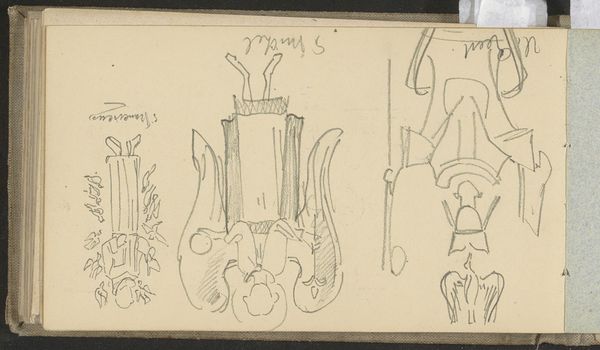
drawing, paper, pencil
#
drawing
#
imaginative character sketch
#
quirky sketch
#
arts-&-crafts-movement
#
sketch book
#
figuration
#
paper
#
personal sketchbook
#
idea generation sketch
#
sketchwork
#
character sketch
#
pencil
#
sketchbook drawing
#
genre-painting
#
storyboard and sketchbook work
#
sketchbook art
Copyright: Rijks Museum: Open Domain
Editor: This drawing, created between 1892 and 1901 by Antoon Derkinderen, is titled "Figuren die een cornemuse, tympanon en psalterium bespelen." It’s rendered in pencil on paper and gives off this wonderfully whimsical feeling. I am curious though, looking at this work as a historical artifact, what stands out to you? Curator: It's fascinating to see how Derkinderen engages with musical traditions in this sketch. Knowing that he was deeply involved in the Arts and Crafts movement gives us a framework. Notice how he depicts these figures almost as studies, evoking medieval manuscripts and a pre-industrial world? Editor: That's interesting! The reference to medieval manuscripts wasn't immediately obvious to me, but now I see it. Curator: Right. This wasn't just about depicting musicians, but about reviving a certain cultural memory, a connection to a past perceived as more authentic. The Arts and Crafts movement sought to critique industrial society. In what way do you think this drawing reinforces that cultural critique? Editor: Maybe through its deliberate crudeness? The sketchiness implies a rejection of mass-produced perfection for something more handmade. And it makes me wonder, were these instruments common in his time, or was he deliberately choosing archaic objects to represent a romanticized past? Curator: Exactly! And precisely. The instruments, while perhaps not in everyday parlance, signal a deliberate reaching back. So, how does this inform our understanding of the piece and Derkinderen's societal role, given that he chose to work with themes around art’s wider socio-cultural impact? Editor: It really emphasizes how art can function as a social commentary. By looking back, artists could critique their present. Curator: Precisely. Seeing how an artwork participates in these broader conversations—that's what brings history to life. Editor: I never really considered this approach to understanding social messaging within older pieces of art. Thank you!
Comments
No comments
Be the first to comment and join the conversation on the ultimate creative platform.
